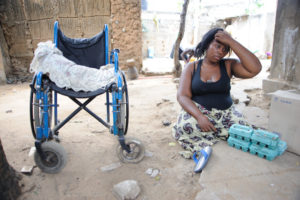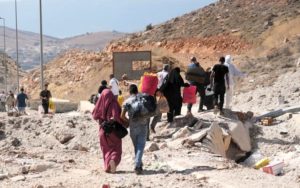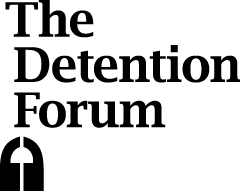By Kaitlin Kaye, MSc
17 August 2021
This is a synopsis, provided by the author, of a Masters dissertation, submitted at the University of Edinburgh. The research was carried out as part of a collaboration between the University and UAI. The views expressed are those of the author and do not reflect the views of UAI.
Table of Contents
Abstract
Research Questions, Organization, and Methodology
Timeline of the forty-year war in Afghanistan
Research Findings by Chapter
Chapter 1: Macro Considerations of the International Refugee Regime and the Decline of Asylum Globally
Chapter 2: Meso Considerations of UK Asylum Policy and Legislation and the Erosion of the UK Asylum Regime
Chapter 3: Micro Considerations of UK Country Guidance Determinations in the Asylum Appeals Process for Afghan Asylum Seekers
Conclusion
Bibliography
Abstract
Protracted war in Afghanistan is now on its fifth decade; its impact has been devastating for Afghan civilians. Despite this evidence, the UK has attempted to bar Afghans from seeking protection within its borders. This phenomenon has occurred even as the UK remained militarily involved in Afghanistan since the beginning of the post 9/11 US-led invasion in October 2001. Deterring Afghans from seeking refuge within the UK has occurred in parallel with the erosion of the UK’s asylum regime. A qualitative analysis of Country Guidance determinations on Afghanistan within the UK’s asylum appeals process reveals that despite the continuation of the war, perilous conditions on the ground for Afghan civilians including, for example, the deadly effects of Coalition air strikes, broad based protection for Afghans seeking asylum in the UK was largely denied. Ultimately the UK has employed a politics of indifference and exclusion (Basaran, 2015) against asylum seekers which has permeated and settled into UK public institutions, including the judiciary with the use of Country Guidance, making the provision of asylum for Afghans seeking protection in the UK today, as one interviewee terms it, little more than ‘a miracle’.
Research Questions, Organization, and Methodology
The central research questions were as follows: Given the human costs of war in Afghanistan, and British government policies and actions since the onset of the US-led military intervention in 2001, how has UK Government policy towards Afghan asylum seekers evolved since 2001? And further, was there a relationship between British asylum policies and the UK’s role in the post 9/11 conflict in Afghanistan? In taking on this project, I explored this inquiry at the macro, meso, and micro levels and organized my research into three additional sub-questions: First, how did the International Refugee regime operate and seek to provide protection for refugees within the nation-state system and how has this been challenged by contemporary politics? Second, has the UK’s asylum regime eroded, and, if so, how has this process occurred? And third, how has the erosion of the UK’s asylum regime affected Afghan asylum seekers in the UK, and did the US-led war in Afghanistan have any role to play in the level of protection offered to Afghan asylum seekers in the UK? Each of these questions were addressed in individual chapters, which made up the bulk of this research.
The study employed a mixed method of research in order to generate a comprehensive understanding of the war effort and changes to the UK asylum system over the past twenty years. First, timelines of the war in Afghanistan from 2001 to 2021 and UK asylum policy from 1971 to 2021 were developed. Second, a detailed document analysis was carried out on twenty-eight Country Guidance determinations on Afghanistan, which inform UK asylum tribunals’ decisions on Afghan asylum applicants. However, only six of these twenty-eight were included in the research outputs due to constraints on length for this study. Finally, a total of seven semi-structured interviews were carried out. However due to the low number of those who agreed to participate, these interviews were not relied upon heavily in this study. Theoretical debates considered included the history and function of asylum in the international sphere as well as considerations of state sovereignty and legitimacy over migration.
Timeline of the forty-year war in Afghanistan
War has been ongoing in Afghanistan for more than forty years. The nature of the conflict and the actors involved have changed over time, but the injustices and inhumane treatment faced by the Afghan people have remained constant. To fully understand the situation in Afghanistan we must understand the historical and political processes which have taken place over this forty-year period starting with the Soviet invasion in 1979.
The Soviet Union invaded and occupied Afghanistan from 1979 – 1989 to prop up the communist Democratic Republic of Afghanistan government. The communist government assumed power in 1978 after a coup. The communist government would then go on to impose land and modernization reforms, which angered many in the rural population. The repressive nature of the government along with these reforms led to the rise of anti-government armed groups – the mujahedeen. Many armed factions emerged united in their ‘jihad’ against the occupiers but were riven by infighting. Against the backdrop of the Cold War, the United States seized this opportunity to support and fund the mujahedeen in their fight against the Soviet occupiers and the government. Eventually, the guerilla warfare waged by the mujahadeen wore down the Soviets. The final troop withdrawal was negotiated by Gorbachev and finished in 1989, leaving the government forces to fight the mujahedeen alone. This would continue until 1992, when the Democratic Republic of Afghanistan fell.
The country then collapsed into factional fighting, as the former mujahedeen commanders vied for power. Out of this infighting, the Taliban emerged and were able to bring order and security to most of the country. The Taliban are an ultraconservative group that pursues a strict interpretation of Islam that is infamous for its restrictions on females including their education. They took power in Kabul in 1996. Only three countries formally recognized the first Taliban government: Pakistan, Saudi Arabia, and the United Arab Emirates. This Taliban regime was ousted after the 9/11 attacks and the US-led invasion in 2001.
After the 9/11 terror attacks, the US demanded that the Taliban hand over Osama bin Laden and expel al Qaeda from Afghan territory. They refused, and the US-led invasion began on October 7, 2001 with operation ‘Enduring Freedom’ – a joint US-UK bombing campaign against Taliban and al Qaeda strongholds. The Taliban and al Qaeda retreated quickly and by November 23, the Taliban were effectively defeated as a military force. Most fighters either went home or fled across the border into Pakistan. Throughout the war, Pakistan was a haven for foreign fighters and harbored many members of the Afghan Taliban in line with their covert geopolitical strategic agenda, while simultaneously, accepting US dollars as part of the ‘Global War on Terror’. Following the Taliban’s apparent defeat, a new interim government was set up subsequent to the Bonn Agreement, which aimed to create a Western-style democracy with a presidential system of government. Following this, the International Security Assistance Force (ISAF) was established by NATO to help maintain security in Kabul. This was later expanded to other parts of the country. From 2002 to 2005 the US and allies began to focus their efforts on reconstruction in Afghanistan, but the launch of a new US-led war in Iraq in 2003 took precedence over the situation in Afghanistan. This facilitated the re-emergence of the Taliban as an armed group that increased attacks against the government and international military forces. Civilian casualties significantly increased as warfare intensified, including with the use of airstrikes and night raids by Coalition forces in response to the growing Taliban insurgency. The increase in suicide attacks carried out by the Taliban and other anti-government forces, served to reinforce suffering and anger amongst Afghans. After the capture and killing of Osama bin Laden in Pakistan on May 1, 2011, support for the war by governments in the US-led Coalition
decreased, culminating in the withdrawal of the bulk of NATO forces in 2014. In January 2015, NATO launched its Resolute Support Mission (RSM) to train, advise, and assist Afghan security forces and institutions to continue the fight against the insurgents and the ‘Global War on Terror’. The focus was on strengthening Special Operations Forces and the Afghan Air Force. The Trump administration was keen to pull out of Afghanistan and thus, engaged in negotiations with the Taliban that culminated in an agreement in Doha in February 2020. However, armed conflict continued with great loss of civilian life and increased control of Afghan territory by the Taliban who had the momentum as the Western-backed government was widely seen to be corrupt and inept. As international troops withdrew, rapid Taliban gains saw their eventual re-capture of Kabul on August 15, 2021, as President Ghani and many government officials fled the country.
Throughout these forty plus years, Afghans have experienced many injustices during different phases of the war. It is important to recognize the role that the US and its allies, especially the UK, have played in all levels of this protracted conflict. This included fueling the mujahedeen insurgency and creating the preconditions for the Taliban takeover and the al Qaeda presence in Afghanistan, to invading and attempting to state-build while continuing to inflict harm on Afghan civilians. Arguably, these countries have not only a legal, but also a moral obligation to the people in Afghanistan given their role in a conflict characterized by great suffering and crimes against humanity. However, despite its role in the conflict, the UK remained reticent to accept Afghan refugees – which is what was explored in this research.
Research Findings by Chapter
Chapter 1: Macro Considerations of the International Refugee Regime and the Decline of Asylum Globally
This chapter addresses how the international refugee regime operates and seeks to provide protection for refugees within the nation-state system and how this has been challenged by contemporary politics. This was explored through a literature review and theoretical considerations on the underlying tension between asylum and the nation-state system and how this tension is playing out in politics today.
The nature of international conflict changed after WWII and especially after the Cold War, as the number of fragile states increased and therefore increased the number of people on the move. However, the changing political dynamics meant that, increasingly, less people were granted asylum as they did not meet the qualifications for protection that were laid out in the 1951 Refugee Convention. While the 1967 Protocol expanded the 1951 Refugee Convention’s geographical limitations of those who may qualify for protection beyond Europe, the narrow definition of ‘persecution’ never expanded to provide protection for those who remained impacted by the realities of living within a fragile state environment. This trend has seen an increasing number of individuals fleeing across borders due to human rights deprivations rather than targeted state persecution against them (Betts, 2013). As people are increasingly fleeing for various reasons, such as generalized violence, environmental change, and food insecurity, they fail to qualify as a refugee under the narrow definition provided in the 1951 Refugee Convention (Betts, 2013). The political will of signatory states to address this growing protection gap diminished in congruence with the changing political dynamics, and thus, no additional instruments were provided by the international community to expand the definition of ‘persecution’. This lack of political will hardened in some states to a full failure of compliance with the current international refugee regime (Betts, 2015).
I use Boswell’s Third Way theory to posit that the UK’s own asylum regime fits under this conception – failure of compliance with the refugee regime. Boswell states that there are four preconditions for legitimacy in liberal welfare states, which I consider the UK to be: security, accumulation, fairness, and institutional legitimacy. She maintains that liberal welfare states will strive to satisfy what they perceive to be public expectations about the satisfactory performance of these functions. As public perceptions around migration and asylum have shifted to favor more restriction in response to an increasingly right-of-center media apparatus, the UK resorts to populist mobilization around its migration policy. This phenomenon puts into conflict the preconditions for legitimacy as the State increasingly places security and protectionist conceptions of fairness above institutional legitimacy and economic accumulation around migrant labor. This is where I argue that UK asylum policy currently lies; at the hands of a populist conglomerate of media and political interests successfully gaining power from their nativist rhetoric by mobilizing their base of disenfranchised citizens. And as a result, the human rights imperative to protect those fleeing persecution and the asylum regime available to ensure this goal, remains present only in name within the United Kingdom.
Chapter 2: Meso Considerations of UK Asylum Policy and Legislation and the Erosion of the UK Asylum Regime
This chapter addresses whether the UK’s asylum regime eroded, and if so, how this process occurred. This was explored through a literature review and analysis of the historical and political processes which shaped this erosion and is outlined in the following way: the incorporation of the protection regimes within UK law, the beginnings of the securitization of migration, the effects of 9/11 on this securitization, the effects of the neoliberal ideology of New Labour on asylum policies, and the rise of populist politics under the Conservative governments culminating in a break with international law.
The historical and political processes starting in the late 1980s and the end of the Cold War resulted in the gradual erosion of the UK’s asylum regime. This started with the securitization of migration in the 1990s, which refers to the move by political actors to place the immigration issue on a security agenda to allow them to respond in extraordinary (and often emergency response) ways (Buzan et al, 1998; Zucconi, 2004). This securitization was then accelerated after the events of 9/11, which culminated in an external-threat focused worldview whereby top decision-makers could justify their increasing surveillance measures over migrants and asylum seekers. This worldview mixed with the neoliberal ideology of New Labour to construe asylum seekers as a dual security and economic threat, which led them to implementing further restrictions on asylum seekers regarding their access to the labor market and to social services. Conservative governments took this a step further, choosing to implement what Theresa May coined the ‘hostile environment’, attempting to make life so difficult for asylum seekers that they leave on their own accord. Additionally, the Conservative governments abandoned the economic orthodoxy of New Labour and chose to impose more restrictions on labor migration, continuing to ratchet up rhetoric on immigration and asylum to appeal to voters at the right of their party. This push to the right on issues of immigration culminated, in part, with Brexit. Once the UK left the European Union (EU), its appetite for breaking norms and shunting international obligations grew, ending in a break with the 1951 Refugee Convention with the introduction of the 2021 Borders and Nationality Bill by Home Secretary Pritti Patel.
This process was aided in part by the media and its fear-mongering discourse around migration and asylum both under New Labour and the Conservatives, which put pressure on policymakers, especially Tony Blair, to put these matters at the top of their agenda. However, the more attention that was given to these issues and the rhetoric surrounding migrants by policymakers, even as asylum numbers decreased, served to increase the saliency of immigration in the eyes of UK citizens, solidifying a wide-ranging anti-immigrant sentiment across the British populace. While this sentiment may not always come to the fore as overtly racist or violent, it still serves to embolden fears of ‘the other’.
Chapter 3: Micro Considerations of UK Country Guidance Determinations in the Asylum Appeals Process for Afghan Asylum Seekers
This chapter addresses how the erosion of the UK’s asylum regime affected Afghan asylum seekers in the UK, and whether the war in Afghanistan had any role to play in the level of protection offered to Afghan asylum seekers in the UK. This was undertaken through an exploration into the origins of the Country Guidance determination process and the way in which these determinations are employed to exclude rather than include. Additionally, an in-depth document analysis of the Country Guidance determinations currently listed for Afghanistan was undertaken in an attempt to find a relationship between the UK’s involvement in the war in Afghanistan and the level of protection offered to Afghan asylum seekers in the UK.
The erosion of the UK’s asylum regime was a gradual process fostered by decades of fearmongering by media and top politicians; serving to implement a wide-ranging anti-immigrant sentiment which in turn made the UK populace indifferent to the lives and suffering of asylum seekers and immigrants (Basaran, 2015). However, the specific indifference towards Afghans was advanced through the mixing of this anti-immigrant sentiment with underplaying the impact of the US-NATO war on Afghan civilians. This downplaying of the war by those in the public arena aimed to silence critics so as to ‘conceal the dehumanizing aspects of the war’ in order to exempt Coalition military and civilian leadership from responsibility for the suffering of Afghan civilians and attempt to justify the continuation of US-led war in Afghanistan (Toros and Mavelli, 2014). This indifference was revealed in the content of the Country Guidance determinations on Afghanistan, as they justified the denials of protection by either claiming progress in the war in terms of increased security for civilians, downplaying negative aspects of the war, or omitting key aspects of the war’s impact on civilians. Therefore, the erosion of the UK’s asylum regime served to tighten restrictions for all asylum seekers across the board but played an important part in fostering indifference towards asylum seekers. This distorted the use of Country Guidance, employing it as a weapon of exclusion. Furthermore, the conduct of the war itself had little effect on the level of protection offered to Afghans seeking asylum in the UK, as no matter the conditions, the indifference towards asylum seekers and the downplaying of the war would seek to distance responsibility away from the actions of the Coalition forces to justify the denial of protection in one way or another.
Conclusion
After examining the UK’s asylum regime at the macro, meso, and micro levels as it relates to the UK’s military intervention in Afghanistan I have come to several conclusions. UK government policy towards all asylum seekers attempting to seek protection within its borders has changed since 2001 in line with the gradual erosion of the asylum system, focusing on more restrictions, narrowing the appeals process, increasing border controls, and making every-day life more difficult for asylum seekers – leading to a break with the 1951 Refugee Convention with the introduction of the 2021 Nationality and Borders Bill. This piece of legislation creates a discriminatory two-tier asylum system, violating the 1951 Refugee Convention, as it criminalizes those entering through what this bill calls ‘illegal routes’ which basically amounts to arriving on UK soil in any other way besides the small number of ‘legal’ routes this bill stipulates. The 1951 Refugee Convention does not distinguish between modes of arrival and clearly posits that states must grant asylum-seekers access to their territory (UNHCR, 2021). In general, the policy towards Afghan asylum seekers specifically has not strayed from this pattern, regardless of the UK’s involvement in Afghanistan after 2001, save for providing an exceptional protection pathway for those Afghans working with UK troops and other personnel on the ground. In assessing the relationship between British asylum policies and the UK’s role in the post 9/11 conflict in Afghanistan, I turn to the issue of Country Guidance. In this assessment I find no distinct relationship between the war effort and the granting of protection. No matter the situation on the ground, even after rises in civilian casualties or atrocities perpetrated against Afghan civilians by Coalition troops and other warring parties, the Country Guidance denied protection and justified the decision to do so in a variety of ways. Therefore, I conclude that the UK is employing a politics of indifference and exclusion (Basaran, 2015) against asylum seekers which has permeated and settled into UK public institutions, including the judiciary with the use of Country Guidance, making the provision of asylum for Afghans seeking protection in the UK today, as one interviewee terms it, little more than ‘a miracle’.
Bibliography
Basaran, T. (2015) The saved and the drowned: Governing indifference in the name of security. Security Dialogue, 46(3), pp.205-220.
Betts, A. (2013) Survival migration: Failed governance and the crisis of displacement. Cornell University Press.
Betts, A. (2015) The normative terrain of the global refugee regime. Ethics & International Affairs, 29(4), pp.363-375.
Boswell, C. (2007) Theorizing migration policy: Is there a third way?. International migration review, 41(1), pp.75-100.
Buzan, B., Waever, O., and DeWilde, J. (1998) Security: A new framework for analysis. Lynne Rienner Publishers.
Toros, H. and Mavelli, L. (2014) Collective evil and individual pathology: The depoliticization of violence against Afghan civilians. International Politics, 51(4), pp.508-524.
UNHCR (2021) “After UK asylum bill debate, UNHCR urges MPs to avoid punishing asylum seekers”. Available at: https://www.unhcr.org/uk/news/stories/2021/7/ 60f8028a4/ after-uk-asylum-bill-debate-unhcr-urges-mps-to-avoid-punishing-asylum-seekers.html (Accessed: 3 August 2021).
Zucconi, M. (2004) ‘Migration and security as an issue in US-European relations’, in J.Tirman (ed) The maze of fear: Security and migration after 9/11. New Press.
This is a briefing on the main findings of this research project. If you are interested and would like a full copy of the research, please contact the project lead, Kaitlin Kaye, at .











